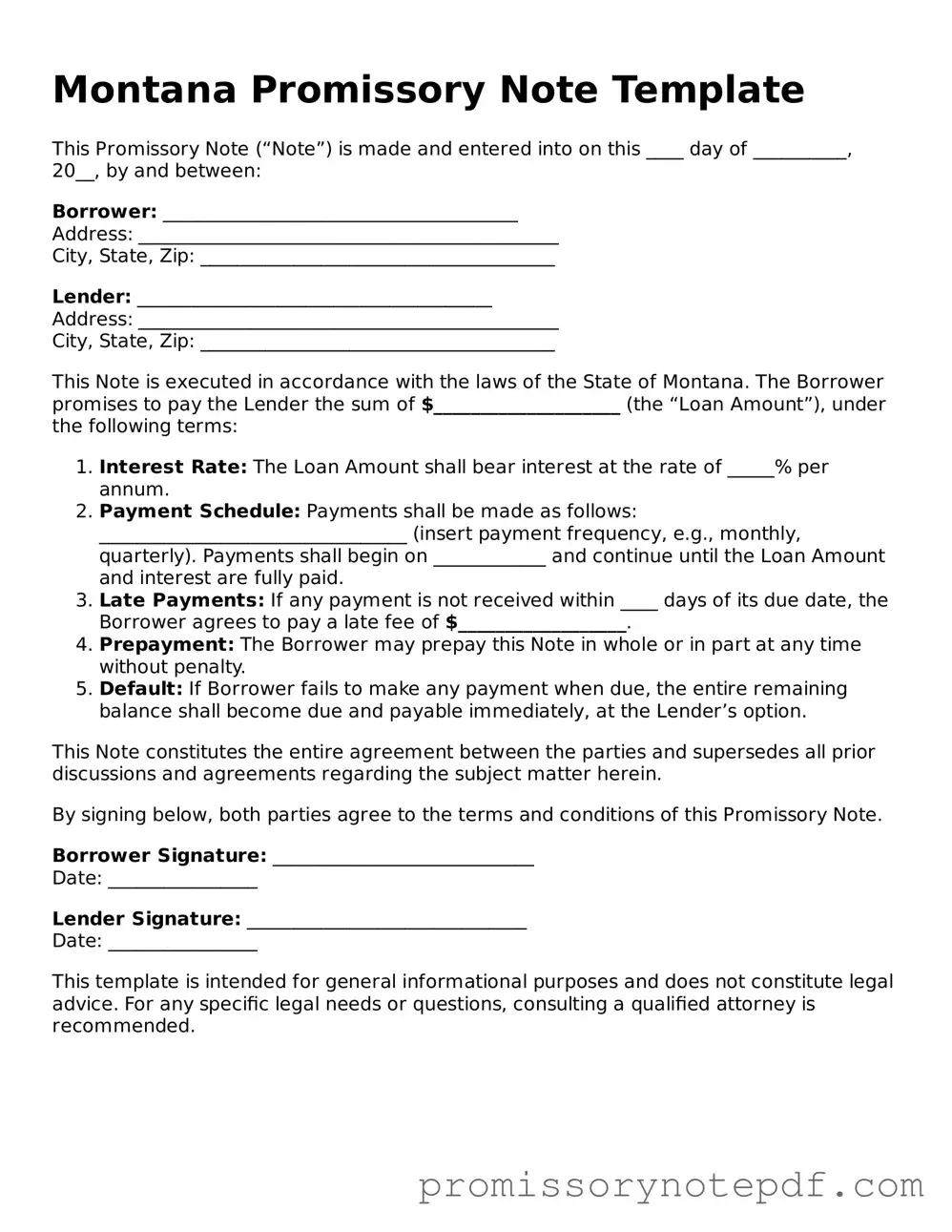The Montana Promissory Note form shares similarities with the standard promissory note, which is a written promise to pay a specified amount of money to a designated party at a particular time. Both documents outline the terms of the loan, including the principal amount, interest rate, payment schedule, and consequences for default. The standard promissory note serves as a legally binding agreement that protects the lender's rights while clearly stating the borrower's obligations. This fundamental structure provides clarity and security for both parties involved in the transaction.
Another document akin to the Montana Promissory Note is the loan agreement. While a promissory note focuses primarily on the borrower's promise to repay, a loan agreement encompasses a broader range of terms and conditions governing the loan. This includes details about collateral, covenants, and representations made by both parties. The loan agreement, therefore, provides a more comprehensive framework for the relationship between the lender and borrower, ensuring that all relevant aspects of the loan are addressed and understood.
The mortgage is also comparable to the Montana Promissory Note, particularly in the context of real estate transactions. A mortgage involves a promissory note as part of the overall agreement, where the borrower pledges their property as collateral for the loan. In this scenario, the promissory note outlines the borrower's commitment to repay the loan, while the mortgage document secures the lender's interest in the property. This dual structure creates a layer of protection for the lender, as they can claim the property if the borrower defaults.
A personal guarantee can be seen as another related document, especially in business loans. A personal guarantee is a promise made by an individual to repay a loan if the primary borrower defaults. Like the Montana Promissory Note, it establishes a clear obligation to repay. However, the personal guarantee adds an additional layer of security for lenders by holding an individual accountable, often the business owner, for the debts incurred by the business. This connection emphasizes the personal responsibility that can accompany business financing.
Lastly, the installment agreement bears resemblance to the Montana Promissory Note in that both involve a series of payments over time. An installment agreement allows a borrower to repay a loan in multiple payments, often with specified due dates and interest rates. Similar to the promissory note, this document clearly outlines the payment terms and conditions, ensuring that both parties understand their rights and responsibilities. The installment agreement, however, may also detail additional provisions regarding late payments or early repayment, which can further define the borrowing relationship.
